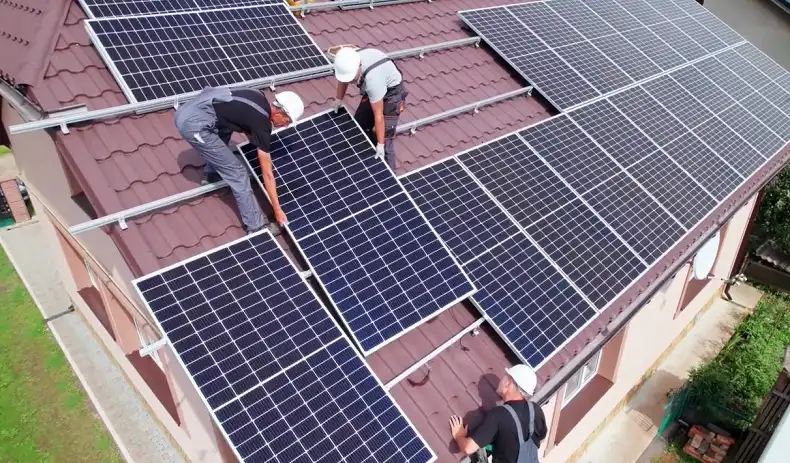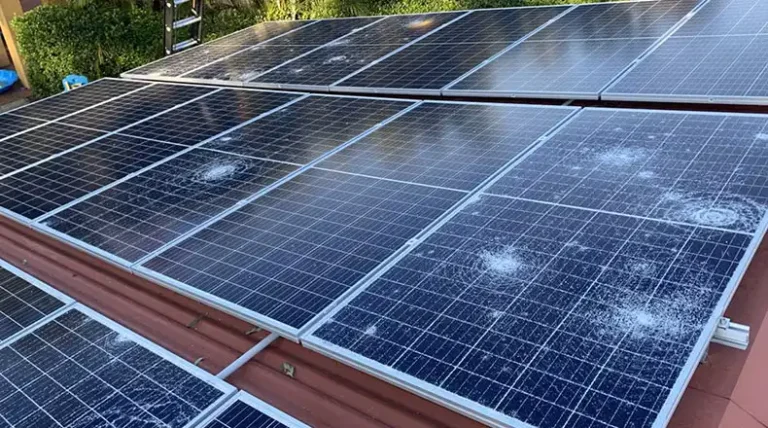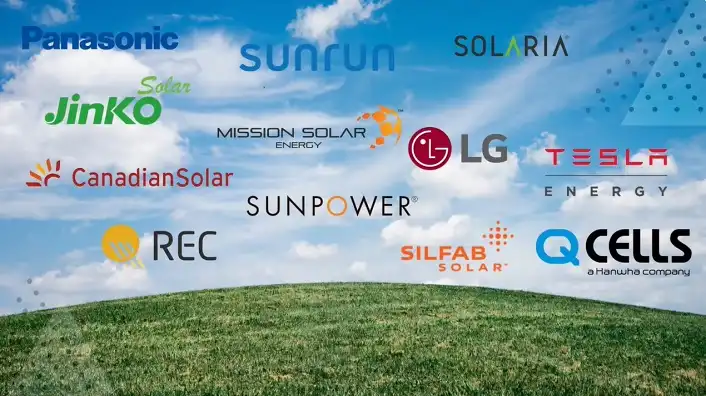Solar Panel Costs in California

Solar energy has become increasingly popular in California, and for good reason. With abundant sunshine and high electricity costs, many homeowners are turning to solar panels as a way to reduce their energy bills and environmental impact. But how much do solar panels actually cost in the Golden State?
As of 2024, the average cost of installing solar panels in California ranges from $10,000 to $13,000 after factoring in the 30% federal solar tax credit. This translates to an average cost of $2.39 to $3.06 per watt before incentives, which is comparable to the national average of $3.01 per watt.
However, the actual cost can vary significantly depending on factors such as system size, location, and available incentives. In this article, we’ll break down the costs of solar panels in California, explore factors that influence pricing, and help you determine if solar is a worthwhile investment for your home.
Average Solar Panel Costs in California
When considering solar panel installation in California, it’s important to understand the overall cost landscape. While the initial investment may seem substantial, the long-term benefits often outweigh the upfront expenses.
Cost Range After Federal Tax Credit
As mentioned in the introduction, the average cost of installing solar panels in California typically falls between $10,000 and $13,000 after applying the 30% federal solar tax credit.
This range makes solar power accessible to many homeowners, especially when considering the potential long-term savings on electricity bills.
Cost Per Watt Comparison To National Average
California’s average cost per watt for solar panel installation is quite competitive when compared to the national average. In the Golden State, you can expect to pay around $2.39 to $3.06 per watt before incentives.
This aligns closely with the national average of $3.01 per watt, demonstrating that despite California’s reputation for higher living costs, solar installation prices remain reasonable.
Cost Variations By City
It’s worth noting that solar panel costs can vary significantly across different California cities. Let’s take a look at some examples:
- Fresno: $3.00 per watt
- Los Angeles: $2.78 per watt
- San Diego: $2.87 per watt
- San Francisco: $3.07 per watt
- Sacramento: $2.84 per watt
These variations highlight the importance of getting quotes specific to your location when planning a solar installation.
Factors Affecting Solar Panel Costs in California
Several key factors influence the cost of solar panel installation in California. Understanding these elements can help you make informed decisions and potentially reduce your overall expenses.
System Size
The size of your solar panel system is one of the most significant factors affecting cost. Larger systems generally cost more but can also produce more energy. The average California home requires a 5 kW system to offset typical energy consumption of over 7,000 kilowatt-hours (kWh) annually.
Solar Equipment
The type and quality of solar equipment you choose can greatly impact your total costs. This includes:
- Solar panels: Different types (monocrystalline, polycrystalline, thin-film) vary in efficiency and price.
- Inverters: These convert DC to AC power and can affect system efficiency.
- Mounting systems: The structure used to secure panels to your roof or ground.
- Batteries: Optional energy storage systems that can increase costs but provide greater energy independence.
Installation Company
The solar installation company you choose can significantly affect your overall costs. While it may be tempting to go with the lowest bidder, it’s crucial to consider factors such as experience, reputation, and quality of work.
A skilled installer can optimize your system’s performance and potentially save you money in the long run.
Permits And Regulations
Obtaining the necessary permits is an essential part of the solar installation process in California. While this adds to the upfront costs, it ensures your system meets all local safety and building codes. The cost and complexity of permitting can vary by location within the state.
Roof Characteristics
Your roof’s condition, size, shape, and orientation can all impact installation costs. Factors to consider include:
- Roof size and available space for panels
- Roof shape and slope, which can affect installation complexity
- Roofing material, as some materials require special mounting systems
- Roof condition, as repairs may be necessary before installation
- Shading and orientation, which can impact panel efficiency
Cost by System Size
The size of your solar panel system is a crucial factor in determining the overall cost of your installation. Let’s break down the average costs for different system sizes in California:
| System Size (kW) | Average Cost (After Tax) | Cost After Solar Tax Credit |
|---|---|---|
| 3 | $8,000 | $5,600 |
| 4 | $10,400 | $7,280 |
| 5 | $12,700 | $8,890 |
| 6 | $15,000 | $10,500 |
| 7 | $17,000 | $11,900 |
| 8 | $20,000 | $14,000 |
| 9 | $22,000 | $15,400 |
| 10 | $23,500 | $16,450 |
As you can see, the cost increases with system size, but not necessarily in a linear fashion. Larger systems often benefit from economies of scale, resulting in a lower cost per watt. It’s important to choose a system size that balances your energy needs with your budget.
Solar Panel Costs Across California Cities
Solar panel costs can vary significantly across different cities in California due to factors such as local labor costs, permitting fees, and market competition. Here’s a breakdown of estimated costs for a 6kW system in major California cities:
| City | Average Cost (6kW System) | Cost After Solar Tax Credit |
|---|---|---|
| Los Angeles | $15,229 | $10,660 |
| San Diego | $15,014 | $10,510 |
| San Jose | $12,240 | $8,568 |
| San Francisco | $19,798 | $13,859 |
| Fresno | $10,435 | $7,304 |
| Sacramento | $12,240 | $8,568 |
These figures demonstrate the importance of getting local quotes when planning your solar installation. The cost differences between cities can be substantial, with factors like urban density, local regulations, and installer competition all playing a role.
Are Solar Panels Worth It in California?
When considering the investment in solar panels, it’s natural to wonder if they’re truly worth the cost. For many California homeowners, the answer is a resounding yes. Let’s explore why:
Long-Term Savings Potential
Solar panels can offer significant long-term savings on your electricity bills. In California, homeowners can potentially save between $60,000 and $100,000 over 25 years, which is the average lifespan of a solar panel system. This means the potential savings could be nearly 10 times the initial installation costs.
Electricity Costs In California
One of the main reasons solar panels are so attractive in California is the state’s high electricity rates. According to the U.S.
Energy Information Administration, Californians pay an average of 31.22 cents per kilowatt-hour, which is more than double the electricity costs in many other parts of the country. With such high rates, the savings from generating your own solar power can add up quickly.
Payback Period
The payback period for solar panels in California is typically around 5 to 6 years. This means that within this timeframe, your energy savings will have covered the initial cost of your solar installation. After this point, the energy your system produces is essentially free, minus any maintenance costs.
Given these factors, solar panels can be an excellent investment for many California homeowners. Not only do they offer substantial long-term savings, but they also increase your home’s value and contribute to a cleaner environment.
Solar Incentives in California
California offers a variety of solar incentives that can significantly reduce the cost of installing solar panels. These incentives, combined with federal programs, make solar energy more accessible and affordable for homeowners across the state.
Federal Solar Tax Credit
The federal solar investment tax credit (ITC) is one of the most significant incentives available to California homeowners. This program allows you to deduct 30% of your total solar installation costs from your federal taxes.
For example, if your solar system costs $20,000, you could receive a $6,000 tax credit. It’s important to note that this is a tax credit, not a rebate, so you need to have sufficient tax liability to take full advantage of it.
State And Local Incentives
In addition to the federal tax credit, California offers several state and local incentives to further reduce the cost of going solar:
Self-Generation Incentive Program (SGIP)
The SGIP provides incentives for installing energy storage systems, such as batteries, alongside your solar panels. This program offers rebates of up to $200 per kilowatt-hour of storage capacity. For example, if you install a 10 kWh battery, you could receive a rebate of up to $2,000.
Disadvantaged Communities – Single-Family Solar Homes (DAC-SASH) Program
This program aims to make solar power more accessible to low-income households in disadvantaged communities. It offers incentives of up to $3 per watt for eligible homeowners, which can cover a significant portion of the installation costs.
Active Solar Energy System Exclusion
California offers a property tax exclusion for solar energy systems. This means that the added value of your solar installation won’t increase your property taxes. This exclusion is available for systems installed before January 1, 2025.
Net Energy Metering (NEM) 2.0 and 3.0
California’s net metering programs allow solar system owners to receive credits for excess energy they send back to the grid. While NEM 2.0 offered more generous compensation, the newer NEM 3.0 (implemented in April 2023) has reduced the buyback rate for solar energy.
However, it still provides an opportunity to offset electricity costs and maximize the value of your solar investment.
Top Solar Installers in California
Choosing the right solar installer is crucial for ensuring a high-quality, efficient solar panel system. Here’s a brief overview of some top solar companies operating in California:
- SunPower: Known for high-efficiency panels and comprehensive solar solutions, SunPower has over 30 years of industry experience. They offer a range of financing options but exclusively sell SunPower products, which may come at a premium.
- Tesla: Renowned for innovative technology, Tesla offers competitive pricing with their price match guarantee. They provide both solar panels and solar roofs, though installation is handled by third-party contractors.
- Palmetto Solar: Offers a variety of high-efficiency panels and inverters. While their standard warranty is limited, customers can opt for Palmetto Protect for extended coverage and monitoring services.
- Elevation Solar: Specializes in whole-home energy management solutions, integrating solar panels with energy storage and monitoring systems. Their services are currently available in five states.
- NRG Clean Power: With over 30 years of experience in California, NRG Clean Power offers high-quality solar panels and whole-home energy solutions. They have high customer satisfaction ratings but don’t provide solar leasing options.
- Solar Negotiators: Known for exceptional maintenance services and customized solar designs, Solar Negotiators focuses on customer education and uses advanced planning tools. They primarily operate in California.
- Stellar Solar: Established in San Diego in 1998, Stellar Solar has completed over 15,000 installations and is highly regarded for customer satisfaction. They offer unique ground-mount solar structures but are only available in California and Michigan.
Final Words
Solar panels represent a significant investment for California homeowners, but one that can pay off substantially in the long run. With average costs ranging from $10,000 to $13,000 after the federal tax credit, and a cost per watt of $2.39 to $3.06, solar energy is increasingly accessible to many households across the state.
The potential for long-term savings is considerable, with estimates suggesting that homeowners could save between $60,000 and $100,000 over the 25-year lifespan of their solar panel system. This is particularly attractive given California’s high electricity rates, which average 31.22 cents per kilowatt-hour.






